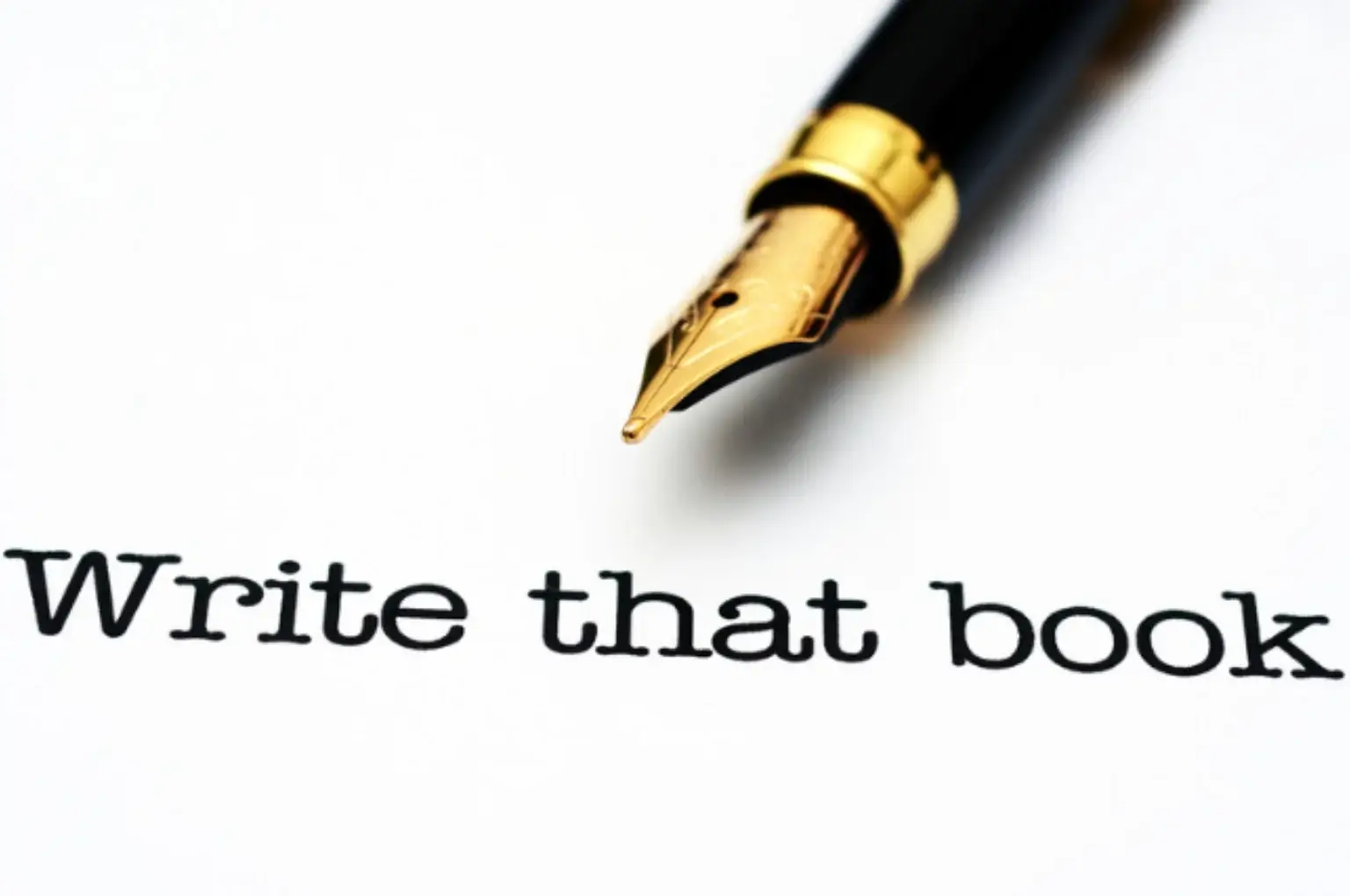Writing and publishing a book can seem like a daunting task, but with the right guidance and approach, it can be an exciting and rewarding journey. In this post, we’ll take you through the essential steps to write and publish a book, providing you with valuable tips and insights along the way. From conducting research to refining your writing skills, we’ll help you navigate the creative process and turn your golden piece of creativity into a reality.

This post contains affiliate links. Please read our disclosure.
1. Research

Think of research as akin to being a detective on a quest for information. Your goal? To unearth a treasure trove of facts that will elevate the quality of your book. First things first, determine the nature of your book. Is it a work of fiction, weaving imaginative tales, or does it deal with real-world topics? In the case of the latter, imagine yourself as a biographer, chronicling someone’s life journey through the pages of your book. This requires you to embark on a journey of discovery, delving into every facet of their existence–their formative years, educational experiences, transition into adulthood, and career trajectory. Books serve a dual purpose: they transport readers to new realms and educate them along the way. As an author, your duty extends to enlightening your readership. Every morsel of information you gather and incorporate to reinforce your narrative will not only enrich your book but also leave an indelible mark on your readers, elevating your work to a realm of profound impact.
2. Outline

The key to writing a book without panicking is to have an outline. Outlining is a way to keep yourself on track when things don’t go right. And the reality is that for many writers, there are times when the creativity muse is just missing, and you need inspiration or ideas to get the juices flowing so that you can continue. Just like any other project, creating an outline will help you to stay organized and make sure that your ideas are communicated coherently throughout your work. The outline isn’t just a way to keep track of your book—it’s also a way to make sure that the book you write is as good as it can be. For instance, if you’re writing a novel, an outline will help you organize and determine where each chapter should go while also guiding your creative process to come up with exciting and engaging ideas. That is why you should write a solid outline, one that will give you a bird’s-eye view of your entire work. Note that outlining is not the same as research. When you are researching, you are noting the information you need to support your points. If writing a novel, define the general idea or theme of your book. List all the main characters and their relationships with one another. Outline each chapter in detail, including a summary of what takes place in that section and who is talking. Number each scene so that you can easily reference it later. There are many ways to outline a non-fiction book, but one way is to start by identifying the overall idea or mission of your book. For example, if your book is about how to raise chickens successfully, start with the overall goal or objective of raising healthy chickens and then list out specific information related to that goal (e.g., what breeds do well in warm climates, how much food do they need each day, etc.). Memoirs are autobiographical essays that recount the author’s life experiences. They provide readers with a unique perspective on the author’s life, and can be interesting and entertaining reads. The outline for a memoir is a personal essay format that allows the reader to get to know you better by learning about your childhood, youth, early adulthood, and recent years. Regardless of the kind of book you wish to write, do not underestimate the importance of an outline. It will take you far in your writing endeavors.
3. Write

Now comes the fun part. We say it’s fun because we believe writing ought to be fun. If it isn’t, then you’re missing something. If you’ve ever struggled to follow through with writing, don’t worry. You’re not alone and there are plenty of strategies available to help you find your way. Starting today, write every day to finish your book! This is not a hard task if you make it a priority. Begin by writing an opening paragraph which introduces the character, setting and conflict–or a first paragraph for your nonfiction book by introducing an important aspect in the theme. Create a writing calendar and put down your planned dates. This gives you a handle on when to write, rather than just trying to make it happen “whenever.” Set aside time each day for this project. It is important not to force yourself; if you find that your brain won’t function at its best during writing sessions, then set an earlier or later meeting time instead of forcing yourself to sit down at 9 a.m. every day. Making it habit will get the job done faster! The idea is to show up and perform. It is one thing to daydream but another to actually do the work. Writing will be hard at times, but ultimately it is rewarding and you will find as time goes along that it will become easier to commit to your daily writing routine. Just stick with it and write every day and not only will you become a better writer, but you will find the process will become easier.
4. Rewrite

You may be thinking, I’ve already rewritten and edited ad infinitum, why do I have to rewrite? And the answer is, to make this the best book possible. You wouldn’t want and otherwise fantastic book to be ruined on account if it’s grammar and spelling mistakes, would you? That is why rewriting is so important. Some authors rewrite their works dozens of times before it is to their satisfaction. But also do not spend a tremendous amount of time in the rewrite, lest you run the risk of completely altering your book’s theme or message.
5. Take a Break

Whenever you’re stuck in the creative rut, trying to write without interruption can help jumpstart the flow of inspiration again. Not only that, but spending some time away from your manuscript will force you to confront any weaknesses or problems with your project and make necessary revisions. How often do you hear people say that they need to take a break from writing their book? A lot of advice out there tells us that we should never stop writing, because our work will suffer in the long run. But is this really true? Do we really have to keep churning out pages without taking any time for ourselves or our manuscripts? It can be tempting to stick with your project full-time. But taking regular breaks from writing will help improve the quality of your final product. In fact, a study published in ScienceDirect found that even short periods of rest helps people recall information more effectively. So when you find yourself feeling overwhelmed or bogged down by the project, try taking a break and come back later with fresh eyes and a new perspective. Everyone knows that creativity needs time and focus to flourish, but often we don’t have the luxury of taking a break. If you’re writing a big piece of work, such as a nonfiction book or novel, then we urge you to spend at least six months away from your work before returning to it. You’ll be glad that you did. If you’re feeling drained and exhausted from the endless writing of your book—or just need creative inspiration—take a break. Yes, many aspiring authors believe that they need to write 24/7 in order to produce a world-class book. But this isn’t always true—sometimes you just need some time away from your work to give it new life.
6. Edit

Edit, edit, and edit! This is one of the most important stages of book writing and publishing. To edit is to make sure that all the parts of your book melt together congruously and that there are no grammatical or spelling errors. You could use an online spelling and grammar checker. Online grammar and spelling checkers are like our writing sidekicks, helping us level up our game. They’re awesome tools for spotting common mistakes and giving our words that polished, professional touch. But here’s the catch: they’re not perfect. Sometimes, they might not get the vibe we’re going for, like when we use cool slang or want to set a certain tone. Imagine them as friendly assistants who give suggestions, but they’re not mind-readers. Even though they’re pretty cool, remember that human insight still rocks when it comes to crafting exceptional writing. So, these tools are like our trusty allies for fixing up our work, but we’ve still got the ultimate power in making our words shine! One of these helpful tools is Grammarly.
7. Proofread

Proofreading involves you going over the text and making sure that there are no final errors. Self-editing is a talent that can be improved with time, though in the beginning, and especially if this is your first book, you’ll want a pair of eyes not yours to glean over the text and look out for any final errors. Although you are trying to publish the book that is as free of errors as possible, you should not be too hard on yourself if this is your first time. We all make mistakes. You do not want to spend millennia proofreading your book. For many, the process of writing a book is fun, though for most of us it can be a bore. Another tip is to take care of yourself physically and mentally. When you have a strong mind and body, you’re able to concentrate better and ideas flow more naturally. If you struggle with creative blocks, then you may enjoy writing at certain times of the day more than others. Try to find those moments that are most conducive to your creativity, and make it a habit to write every day. This is perhaps the most important part of the writing. Proofreading means so much more than just going over the text to check grammar. It also means going over each sentence and asking yourself, does this flow? Is there anything I could add or subtract from my phrases that will make them more powerful and effective for your readers? If the answer is yes, then hammer away at your sentences until they are not only perfect grammatically, but they do not lack any additional information. Now a word about grammar checkers. There are a number of excellent tools in this vein that will help you, though keep in mind that the tools likely in many instances will not provide you with the correct word. You’ll have to go over each and every word and sentence on your own and correct them, even with a grammar checker. If you do insist on having perfect writing, then use these tools only as they were meant to be used, that is, to assist but not to completely replace the competence of a human.
8. Publish!

Now that you’ve written your book, and proofread it, so that it is error-free, you can go ahead and publish it. This is undoubtedly the most exciting part of the process for most of us, and one that will reap numerous rewards both for yourself and others. If you decide to self-publish your book, there are a number of venues–such as Amazon Kindle Direct Publishing (KDP)–that allow you to upload your text, add a cover, and print at least several copies of your book to give to friends, family members, for agents. Traditional publishing involves you going to a regular publisher and submitting your work to be considered for publication. However, this route is the hardest for most writers, and if you’re just beginning, you may consider self-publishing.
Final Thoughts
Congratulations on completing this guide on how to write and publish a book! We hope that this article has provided you with the necessary steps to start and finish your own masterpiece. The writing process can be daunting, but with practice and dedication, you can achieve your goal of becoming a published author. Don’t be afraid to take the first step and put your ideas on paper. With the right mindset and approach, you can turn your dreams into a reality. Happy writing and publishing!
Daniel Zohar is a passionate entrepreneur and digital marketing expert with a strong focus on business and affiliate marketing. With over 10 years of experience in the industry, he has gained valuable insights and strategies that he is eager to share with others. Through his writing and speaking, Daniel aims to help others achieve success in business and affiliate marketing, using his own experiences as a guide. In addition to his work as a writer and speaker, he is a successful business owner and consultant, helping companies and individuals reach their goals in the digital world.
You Might Also Like:
- How to Find the Right Influencer for Your Brand
June 23, 2024 - 9 Best Niches for Affiliate Marketing in 2025
January 7, 2025 - 16 Affordable Hosting Options for Your Blog in 2025
February 21, 2025 - Comedy Sells: How to Make Your Business Memorable with Humor
January 6, 2023 - 100 of the Most Beautiful Words in the English Language
April 8, 2024
